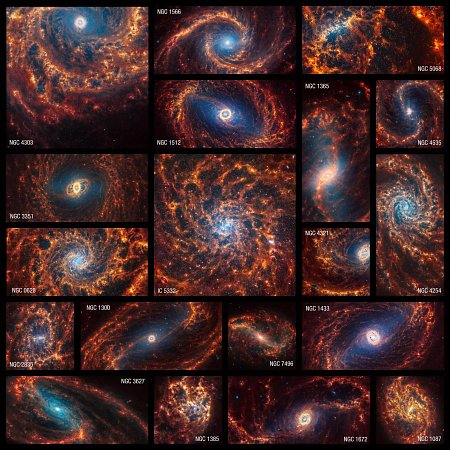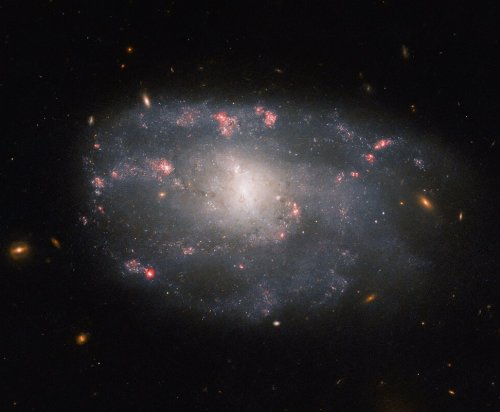A classic spiral galaxy
Monday is always a slow news day in space, so we start the day with a cool image. The picture to the right, reduced and sharpened to post here, was taken by the Hubble Space Telescope of a spiral galaxy about 100 million light years from Earth.
That NGC 3430 is such a fine example of a galactic spiral may be why it ended up as part of the sample that Edwin Hubble used to define his classification of galaxies. Namesake of the Hubble Space Telescope, in 1926 he authored a paper which classified some four hundred galaxies by their appearance — as either spiral, barred spiral, lenticular, elliptical or irregular. This straightforward typology proved immensely influential, and the modern, more detailed schemes that astronomers use today are still based on it. NGC 3430 itself is an SAc galaxy, a spiral lacking a central bar with open, clearly-defined arms.
The bright blue indicates areas of star formation, while the reddish streaks indicates dust. The orange/reddish dots above and below the galaxy are distant background galaxies whose light has been shifted to the red because they appear to be moving away from us due to the expansion rate of the universe.
Monday is always a slow news day in space, so we start the day with a cool image. The picture to the right, reduced and sharpened to post here, was taken by the Hubble Space Telescope of a spiral galaxy about 100 million light years from Earth.
That NGC 3430 is such a fine example of a galactic spiral may be why it ended up as part of the sample that Edwin Hubble used to define his classification of galaxies. Namesake of the Hubble Space Telescope, in 1926 he authored a paper which classified some four hundred galaxies by their appearance — as either spiral, barred spiral, lenticular, elliptical or irregular. This straightforward typology proved immensely influential, and the modern, more detailed schemes that astronomers use today are still based on it. NGC 3430 itself is an SAc galaxy, a spiral lacking a central bar with open, clearly-defined arms.
The bright blue indicates areas of star formation, while the reddish streaks indicates dust. The orange/reddish dots above and below the galaxy are distant background galaxies whose light has been shifted to the red because they appear to be moving away from us due to the expansion rate of the universe.








